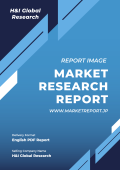1 Preface
2 Scope and Methodology
2.1 Objectives of the Study
2.2 Stakeholders
2.3 Data Sources
2.3.1 Primary Sources
2.3.2 Secondary Sources
2.4 Market Estimation
2.4.1 Bottom-Up Approach
2.4.2 Top-Down Approach
2.5 Forecasting Methodology
3 Executive Summary
4 Introduction
4.1 Overview
4.2 Key Industry Trends
5 Global Automotive Paints Additives Market
5.1 Market Overview
5.2 Market Performance
5.3 Impact of COVID-19
5.4 Market Forecast
6 Market Breakup by Type
6.1 Fisheye Eliminator
6.1.1 Market Trends
6.1.2 Market Forecast
6.2 Blending Solvents
6.2.1 Market Trends
6.2.2 Market Forecast
6.3 Flow Enhancers
6.3.1 Market Trends
6.3.2 Market Forecast
6.4 Others
6.4.1 Market Trends
6.4.2 Market Forecast
7 Market Breakup by Vehicle Type
7.1 Passenger Cars
7.1.1 Market Trends
7.1.2 Market Forecast
7.2 Commercial Vehicles
7.2.1 Market Trends
7.2.2 Market Forecast
8 Market Breakup by Application
8.1 Automotive Decorative Paint
8.1.1 Market Trends
8.1.2 Market Forecast
8.2 Automotive Antirust Paint
8.2.1 Market Trends
8.2.2 Market Forecast
8.3 Automotive Fire-retardant Paint
8.3.1 Market Trends
8.3.2 Market Forecast
8.4 Others
8.4.1 Market Trends
8.4.2 Market Forecast
9 Market Breakup by Region
9.1 North America
9.1.1 United States
9.1.1.1 Market Trends
9.1.1.2 Market Forecast
9.1.2 Canada
9.1.2.1 Market Trends
9.1.2.2 Market Forecast
9.2 Asia-Pacific
9.2.1 China
9.2.1.1 Market Trends
9.2.1.2 Market Forecast
9.2.2 Japan
9.2.2.1 Market Trends
9.2.2.2 Market Forecast
9.2.3 India
9.2.3.1 Market Trends
9.2.3.2 Market Forecast
9.2.4 South Korea
9.2.4.1 Market Trends
9.2.4.2 Market Forecast
9.2.5 Australia
9.2.5.1 Market Trends
9.2.5.2 Market Forecast
9.2.6 Indonesia
9.2.6.1 Market Trends
9.2.6.2 Market Forecast
9.2.7 Others
9.2.7.1 Market Trends
9.2.7.2 Market Forecast
9.3 Europe
9.3.1 Germany
9.3.1.1 Market Trends
9.3.1.2 Market Forecast
9.3.2 France
9.3.2.1 Market Trends
9.3.2.2 Market Forecast
9.3.3 United Kingdom
9.3.3.1 Market Trends
9.3.3.2 Market Forecast
9.3.4 Italy
9.3.4.1 Market Trends
9.3.4.2 Market Forecast
9.3.5 Spain
9.3.5.1 Market Trends
9.3.5.2 Market Forecast
9.3.6 Russia
9.3.6.1 Market Trends
9.3.6.2 Market Forecast
9.3.7 Others
9.3.7.1 Market Trends
9.3.7.2 Market Forecast
9.4 Latin America
9.4.1 Brazil
9.4.1.1 Market Trends
9.4.1.2 Market Forecast
9.4.2 Mexico
9.4.2.1 Market Trends
9.4.2.2 Market Forecast
9.4.3 Others
9.4.3.1 Market Trends
9.4.3.2 Market Forecast
9.5 Middle East and Africa
9.5.1 Market Trends
9.5.2 Market Breakup by Country
9.5.3 Market Forecast
10 Drivers, Restraints, and Opportunities
10.1 Overview
10.2 Drivers
10.3 Restraints
10.4 Opportunities
11 Value Chain Analysis
12 Porters Five Forces Analysis
12.1 Overview
12.2 Bargaining Power of Buyers
12.3 Bargaining Power of Suppliers
12.4 Degree of Competition
12.5 Threat of New Entrants
12.6 Threat of Substitutes
13 Price Analysis
14 Competitive Landscape
14.1 Market Structure
14.2 Key Players
14.3 Profiles of Key Players
14.3.1 BASF SE
14.3.1.1 Company Overview
14.3.1.2 Product Portfolio
14.3.1.3 Financials
14.3.1.4 SWOT Analysis
14.3.2 Clariant AG
14.3.2.1 Company Overview
14.3.2.2 Product Portfolio
14.3.2.3 Financials
14.3.3 Dupont De Nemours Inc.
14.3.3.1 Company Overview
14.3.3.2 Product Portfolio
14.3.3.3 Financials
14.3.3.4 SWOT Analysis
14.3.4 Eastman Chemical Company
14.3.4.1 Company Overview
14.3.4.2 Product Portfolio
14.3.4.3 Financials
14.3.4.4 SWOT Analysis
14.3.5 PPG Industries Inc.
14.3.5.1 Company Overview
14.3.5.2 Product Portfolio
14.3.5.3 Financials
14.3.5.4 SWOT Analysis
14.3.6 Sherwin-Williams Company
14.3.6.1 Company Overview
14.3.6.2 Product Portfolio
14.3.6.3 Financials
14.3.6.4 SWOT Analysis
14.3.7 Solvay S.A
14.3.7.1 Company Overview
14.3.7.2 Product Portfolio
14.3.7.3 Financials
14.3.7.4 SWOT AnalysisKindly, note that this only represents a partial list of companies, and the complete list has been provided in the report.
*** 免責事項 ***
https://www.globalresearch.co.jp/disclaimer/











